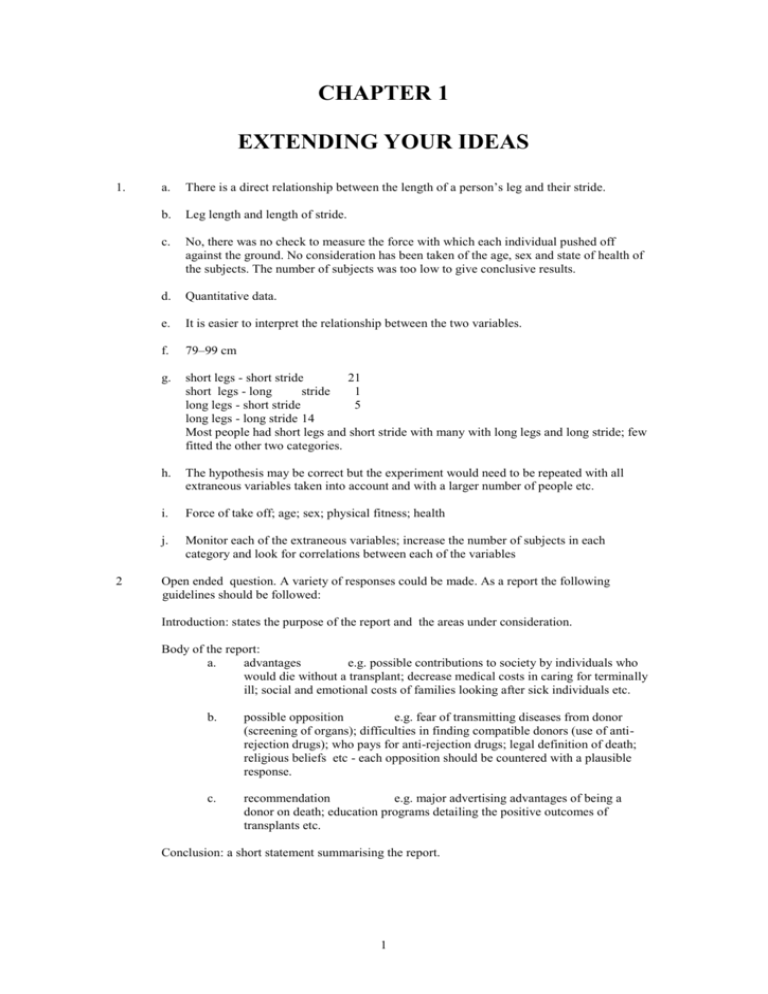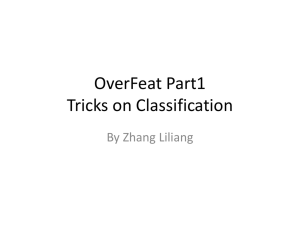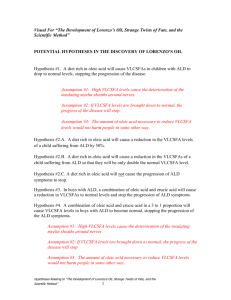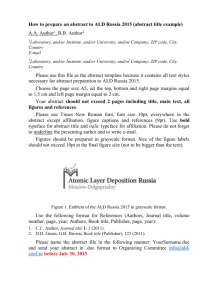EXTENDING YOUR IDEAS
advertisement

CHAPTER 1 EXTENDING YOUR IDEAS 1. 2 a. There is a direct relationship between the length of a person’s leg and their stride. b. Leg length and length of stride. c. No, there was no check to measure the force with which each individual pushed off against the ground. No consideration has been taken of the age, sex and state of health of the subjects. The number of subjects was too low to give conclusive results. d. Quantitative data. e. It is easier to interpret the relationship between the two variables. f. 79–99 cm g. short legs - short stride 21 short legs - long stride 1 long legs - short stride 5 long legs - long stride 14 Most people had short legs and short stride with many with long legs and long stride; few fitted the other two categories. h. The hypothesis may be correct but the experiment would need to be repeated with all extraneous variables taken into account and with a larger number of people etc. i. Force of take off; age; sex; physical fitness; health j. Monitor each of the extraneous variables; increase the number of subjects in each category and look for correlations between each of the variables Open ended question. A variety of responses could be made. As a report the following guidelines should be followed: Introduction: states the purpose of the report and the areas under consideration. Body of the report: a. advantages e.g. possible contributions to society by individuals who would die without a transplant; decrease medical costs in caring for terminally ill; social and emotional costs of families looking after sick individuals etc. b. possible opposition e.g. fear of transmitting diseases from donor (screening of organs); difficulties in finding compatible donors (use of antirejection drugs); who pays for anti-rejection drugs; legal definition of death; religious beliefs etc - each opposition should be countered with a plausible response. c. recommendation e.g. major advertising advantages of being a donor on death; education programs detailing the positive outcomes of transplants etc. Conclusion: a short statement summarising the report. 1 3. Life characteristic Organic compounds Viruses Nucleic acid, protein Reproduction Induce host to produce more virus Living things Nucleic acids, proteins, carbohydrates, lipids Asexual and/or sexual Metabolism Respiration Excretion Growth & development Irritability Movement Absent Absent Absent Absent Absent Absent Present Present Present Present Present Present Since living things are defined as cellular structures capable of carrying out most of the life characteristics, viruses cannot be classified as living things. But it could be argued that viruses exhibit degenerative evolution as a result of their parasitic mode of existence. The main role of organisms is to stay alive long enough to reproduce. The viruses are successful in ensuring that more viruses are produced and thus could be considered highly specialised living things. 4. a. Searched literature for scientific investigations on ALD to ascertain facts. Recalculated scientific data. Formulated a hypothesis related to the facts. Tested the hypothesis. Evaluated the results. Modified the hypothesis on the basis of the results. Tested the modified hypothesis. b. Deductive: literature survey; recalculation of data. Inductive: transfer of data from rats or isolated ALD cells to in-situ human; production of VLCFA and harmless unsaturated fatty acids depends on a single enzyme. c. Oleic acid will halve the production of very long chain fatty acids which accumulate in ALD sufferers. The long chained pure erucic acid (GT) from rapeseed would monopolise the enzyme which produces VLCFA when administered to ALD sufferers. d. No. Both oleic and erucic acid was tested on only one person (a carrier for ALD) prior to being administered to Lorenzo. e. i. Lack of support by the scientific fraternity in following up the Odones’ ideas derived from their literature surveys. ii Moser assumed that food containing a lot of C26O also contained C24O and that screening for one automatically screened for the other. f. The treatment has to be checked for all possible side effects on a large number of different individuals. g. i. This is still not absolute proof, although it strongly suggests that the treatment is effective, since there was not a control group without administration of oil. Not all of the boys, even given the genetic defect, may have exhibited the disease – they may have had a gene combination that prevented or delayed the onset of the symptoms or other environmental interactions may be responsible. The numbers of subjects in each of the two treated groups is not given. Assuming that there were equal numbers in each group, then only 52 boys were given each treatment. Thus 39 of the regular takers and 17 of the irregular takers were still healthy. The difference is not large enough to be conclusive. ii. Student s could argue either way viz giving a placebo results in false hopes of preventing the onset of the disease and denial of a possible choice to prevent the disease onset. By not giving the placebo, however, it is not possible to fully determine if the oil was the contributing factor in the decrease in numbers exhibiting the disease and thus could be giving others false hope. 2








